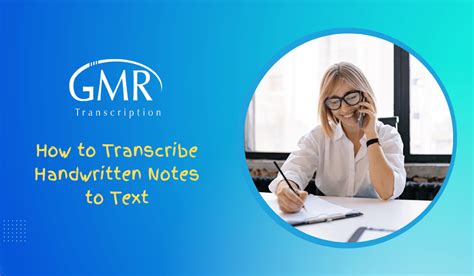Transforming years’ worth of handwritten notes into digital text files is a monumental task for anyone, and existing off-the-shelf solutions often fall short, especially when dealing with less-than-perfect handwriting. Given the rapid advancements in technology, one might wonder if an AI-based solution could be the key to seamlessly transcribing handwritten notes. The conversation in some tech communities reveals a mix of skepticism and optimism, all while showcasing a variety of potential paths to achieving accurate transcription.
One of the most straightforward methods suggested involves using speech-to-text technologies. Essentially, an individual could read their notes into a recording device and then use various transcription software to transform the recordings into text. Solutions like Otter.ai and VideoToTextAI have gotten favorable reviews and could be viable options for this approach. In this method, each journal entry could start with a reference code, ensuring that the recordings and transcribed text sections are easily cross-referenced. Although this manual approach could be time-consuming, it offers a significant upper boundary in cost and is often more reliable than most automatic handwriting recognition tools.
On the tech-savvy side, the world of AI and machine learning has showcased several OCR (Optical Character Recognition) tools that claim to handle handwritten text. For instance, Tesseract, an open-source OCR engine, is recommended for those skilled in scripting and wanting to try a low-cost yet effective solution. However, the results may vary based on the quality of handwriting and pre-processing of the images. Another strong contender is Google Cloud’s Vision API, which has been noted for its superior character recognition capabilities, albeit at a higher cost.
Despite the promises of technology, there is merit in balancing these tools with manual efforts. One insightful suggestion highlights the value of revisiting and summarizing rather than direct transcription. This reflective approach, akin to keeping a ‘Second Brain’, allows one to discern the most valuable insights worth digitizing, creating an organized and concise repository of knowledge. Manually engaged with their content, individuals often find that older materials may not hold as much relevance over time but refreshing and summarizing the information does provide an opportunity to re-evaluate and retain only the most pertinent details.
Finally, for those open to a more tailored solution, training a machine learning model on one’s handwriting could be the ultimate answer. While this task involves significant upfront work, particularly in manually labeling data to help the model learn effectively, the long-term benefits are considerable. Local and cloud-based models like AWS Textract and Transkribus have demonstrated potential in various use cases but might require fine-tuning to cater to unique handwriting styles. Similarly, leveraging systems like SearchablePDF could offer semi-automated options where large volumes of handwritten texts are batch-processed with user verification steps included.
In conclusion, while AI and tech-based solutions provide exciting potential for transcribing handwritten notes, the task’s complexity often means that the best approach blends technology with personal effort. Whether leveraging speech-to-text, existing OCR solutions, or training custom AI models, each method comes with its own set of trade-offs and requirements. This journey towards digitizing handwritten notes is not merely a technical one but involves continuous learning and adaptation to find what works best on a case-by-case basis. For now, embracing a multifaceted approach seems to be the most practical way forward.


Leave a Reply